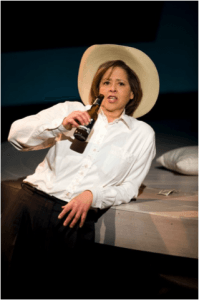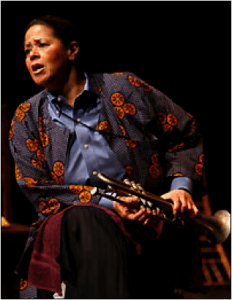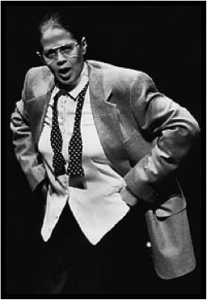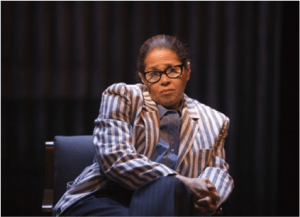Anna Deavere Smith is an American actress, playwright and professor, best known for her one-woman plays that examined the social issues behind current events. Smith was born September 1958 in Baltimore, and was raised in a racially segregated middle-class section of Baltimore. Many of her works are about racial issues, so her upbringing proved to be highly influential for her plays to come.
Smith had an undeniable talent for imitation and this therefore became the focus of her performances. Her breakthrough work was Fires in the Mirror: Crown Heights, Brooklyn and Other Identities (1992). She crafted the play from her own in-depth interviews with members of the Brooklyn community, and performed all 29 roles, moving seamlessly from one character to the next.
(PBS, 2012)
(TED, 2007)
Smith would walk up to people on the street and in return for them giving them an hour of their time, she would offer them a chance to see themselves perform. Her work focused a lot around communities. Smith herself stated, ‘I realise this approach could serve to mirror a community that was interested in looking at itself […] particularly communities where people were having difficulty saying things to one an other or felt silenced’ (Clines, 1992). I really like this idea of holding a mirror up to a community, showing them what is going on around them. This would be something that I would like to explore further if I decide to take my performance down a more political route, which is something that I am interested in.
Researching the work of Anna Deavere Smith raised a few questions for when producing my own show.
Why are we listening?
What are we listening for?
What do we want to see?
What is it that draws us to a form of theatre in which the actor introduces people to us that we’re asked to imagine?
We are clearly aware of the theatrical façade so how is this form of theatre so effective?
Is there something in the very act of taking on the ‘other’ in a way that is not possible in the ‘real world’?
I cannot begin to produce a solid and justifiable answer to these questions, but perhaps its something to the structure of her performances. She doesn’t completely embody the character is a visual sense. The language and the actual telling of the testimony takes priority to the visual believability.
Within an interview, Smith stated ‘I see myself as not a typical theatre person, but a person who uses the theatre as a place to meet people and explore ideas’ (Arboleda, 2010). This notion of exploring real people, is something that I would possibly like to consider. I also like the way she incorporates a political stance on her work. Its not a demanding political message but its evident enough to potentially make a difference.
Work Cited
Arboleda, Y. (2010) Let Me Down Easy. [online] The Huffington Post. Available from http://www.huffingtonpost.com/yazmany-arboleda/emlet-me-down-easyem_b_400996.html. Accessed 7 February 2016.
Clines, F. (1992) At work with: Anna Deavere Smith; The 29 Voices of One Woman In Search of Crown Heights. [online] New York: The New York Times. Available from http://www.nytimes.com/1992/06/10/garden/work-with-anna-deavere-smith-29-voices-one-woman-search-crown-heights.html?pagewanted=all. Accessed 7 February 2016.
PBS (2012) Great Performances | Anna Deavere Smith talks about “Let me down easy” | PBS. [online video] Available from https://www.youtube.com/watch?v=gmA0zM-S1sE [Accessed 6 February 2016].
Smith, A. D. (1992) Fires in the Mirror: Crown Heights, Brooklyn and Other Identities. [performance] New York: The Public Theatre. 1 May.
TED (2007) Anna Deavere Smith: Four American Characters. [online video] Available from https://www.youtube.com/watch?v=KR8SwPmCFd4 [Accessed 6 February 2016].





